Diamond and Gemstone Treatments
Diamond Treatments
Clarity Enhancements*
*Disclaimer: Wedding Bands & Co. does not sell clarity enhanced diamonds
Laser Drilling
Laser drilling is a clarity enhancing procedure that drills into a diamond using a laser that reaches into dark internal knots or crystal inclusions. Once it has been drilled into the diamond, it is injected which acid that does not harm the diamond but bleaches the darker inclusions making them less visible with the naked eye. Laser drilling does not have negative effects on diamonds but are visible with the naked eye as thin, nearly microscopic lines that are normally most visible from the bottom of the diamond or can be fracture filled.
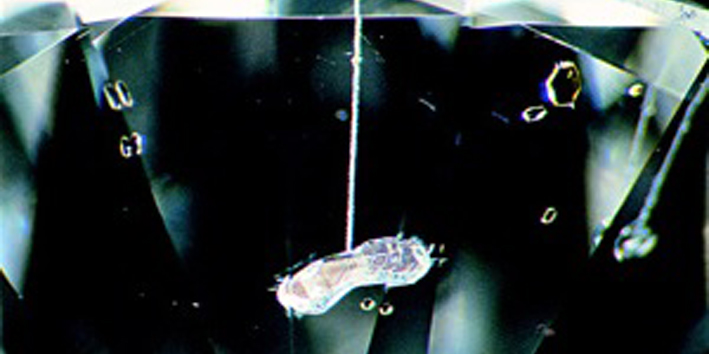
Fracture Filling
Fracture filling is a clarity enhancing procedure that uses an epoxy-like material to fill in laser drilled cavities or surface reaching inclusions and fissures. Once the fracture is filled, it appears clear from most angles. However, fracture filling can be visible under certain angles and under certain lighting as iridescent flashes of light (traditionally green or purple). Fracture filled diamonds should not be exposed to extreme temperatures under any circumstances. Fracture filled diamonds will turn milky or opaque when exposed to extreme heat.

Color Enhancements
High Pressure High Temperature Treatment (HPHT)*
*Disclaimer: Wedding Bands & Co. does not sell HPHT diamonds
High Pressure High Temperature Treatment is a treatment that uses high levels of heat and pressure (closely mimicking the formation conditions of diamonds) in order to reduce the color of diamonds. It can remove most color from different brownish color diamonds. HPHT is a permanent treatment and the effect of the treatment will not diminish or change overtime. HPHT diamonds are required by law to be disclosed by any vendor that sells them. GIA does include HPHT on their grading reports and many grading labs will include a laser inscribed notation on a diamond's girdle to mark a diamond that has undergone HPHT.
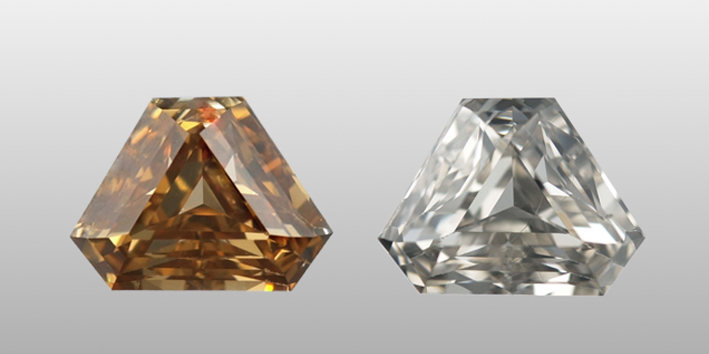
Diamond Coating*
*Disclaimer:Wedding Bands & Co. does not sell coated diamonds
Diamond coating is a thin coating consisting of a film or dye that can alter the color of diamonds and make fake or simulated diamonds harder to detect. This film or dye is temporary and comes off with wear, cleaning or extended exposure to water. Selling coated diamonds without disclosure is illegal and is tantamount to deception or false advertisement.
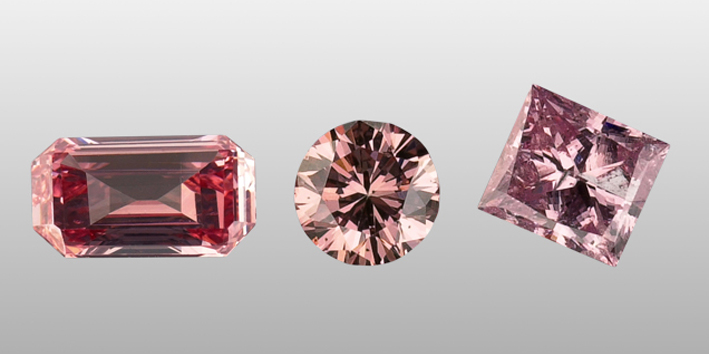
Irradiation
Irradiation is used to enhance or deepen the color of natural fancy colored diamonds. This process uses mild radiation to change or enhance color. Irradiation is a permanent treatment, however, diamond color can change or vary when the diamond is exposed to high heat (such as jewelry repair) and therefore must be disclosed to jewelers who are doing work with diamonds that are irradiated. Irradiation is a common treatment and legally, like all other treatments, is required to be disclosed by the vendor selling the diamonds.
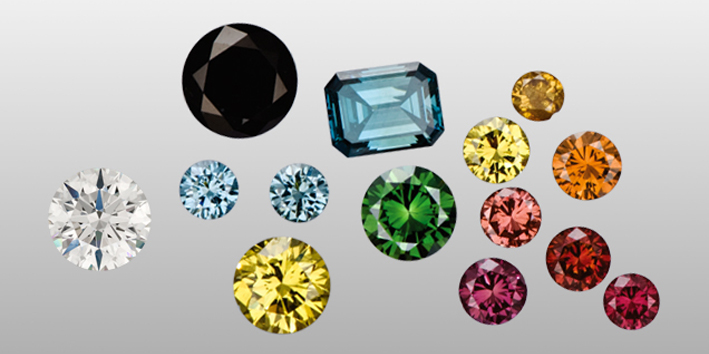
Gemstone Treatments
Clarity Enhancements/Fracture Filling/Laser Drilling/Waxing and Oiling
See above descriptions. Fracture filling is a frequently used in emeralds. Essential oils, polymers, resins or waxes are used to fill in larger surface reaching inclusions in emeralds to even out color and darken prominent characteristics in the stone. Emeralds should therefore always be treated with care and should never be exposed to high temperatures. Fracture filling can also be found in rubies and diamonds.
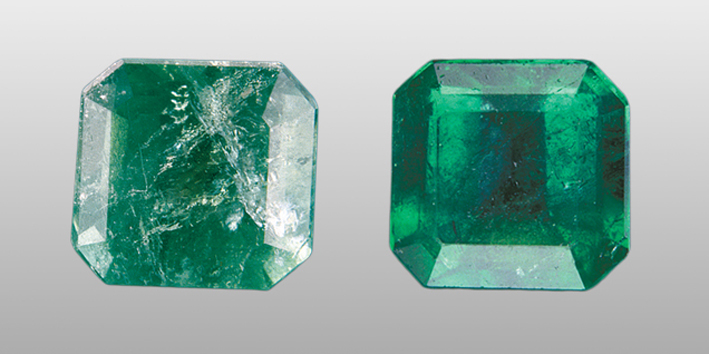
Bleaching
Bleaching is a treatment that uses strong acid to remove discoloration of stones. Due to the strength of the acid, it can leave stones brittle and more prone to breaking. Stones that are frequently bleached are pearls and jadeite.
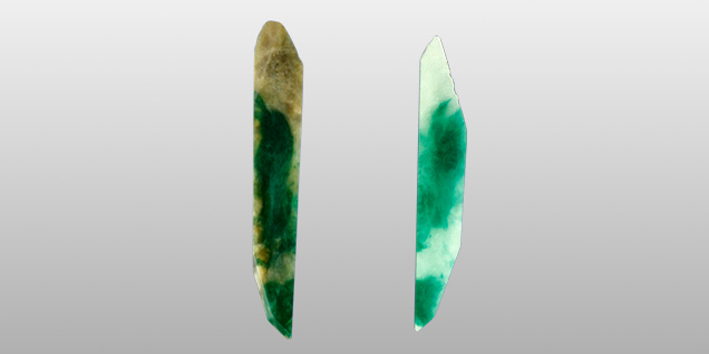
Surface Coating
See above descriptions. Surface coatings are more frequently softer than the underlying gemstone and are therefore more prone to scratches and are usually temporary and can come off through wear, cleaning or extended exposure to water. The most commonly sold and distributed stone with a surface coating is mystic topaz. However, other frequently coated stones include diamonds, topaz, coral, pearls, tanzanite (rarely), and quartz.
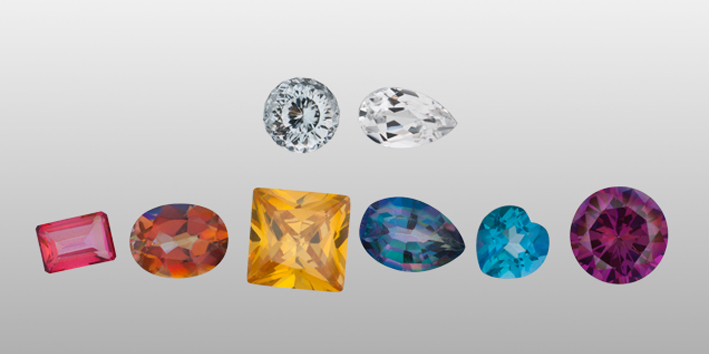
Dyeing
Dyeing uses dye to change the color of a gemstone. Dying is semi-permanent but can fade overtime with extended exposure to sunlight. Dyes will be ruined when exposed to alcohol, acetone or any strong solvents. Dyeing is a frequently used treatment for pearls but is also commonly used on many opaque gemstones such as chalcedony, agate, coral, jade, turquoise, lapis and quartz.
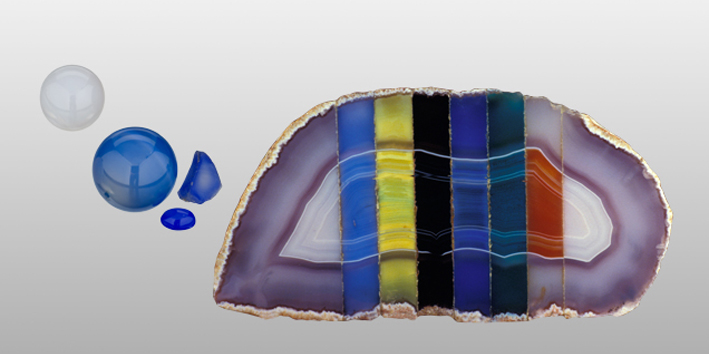
Heat Treatment
Heat treatment is one of the most commonly used gemstone treatments that uses high temperatures to enhance, change or even out the color of gemstones. Heat treatment is frequently used on sapphires, rubies and tanzanite but other frequently heat treated gemstones are amber, amethyst, aquamarine, citrine, topaz, tourmaline and zircon.
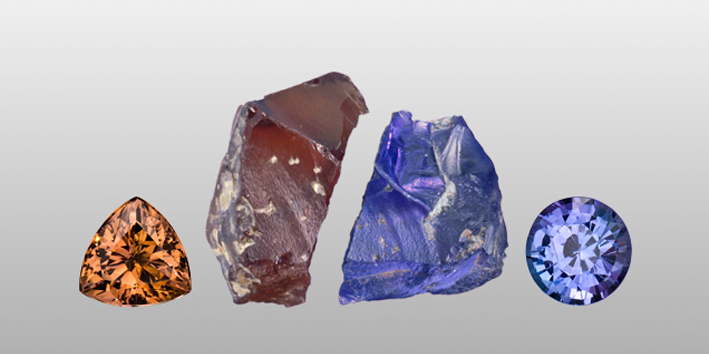
Impregnation
Impregnation fills a porous gemstone with a polymer (color or otherwise) to enhance color, durability, and appearance. Due to the natural melting point of commonly used polymers, impregnated gemstones are susceptible to damage in high temperatures. Frequently impregnated gemstones are opaque and include turquoise, lapis, amazonite, and jadeite.
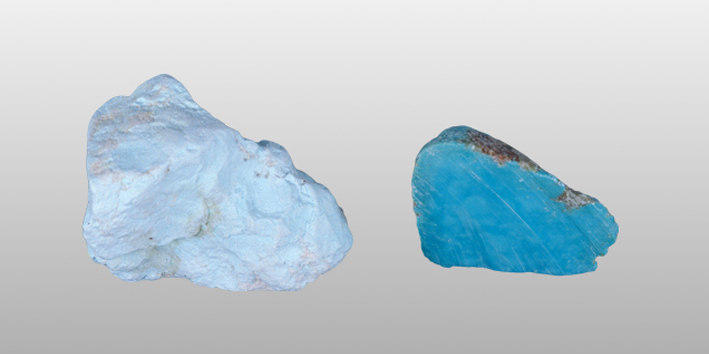
Irradiation
See above description. The most frequently irradiated gemstone used in jewelry is London blue topaz and other frequently irradiated gemstones are diamonds, sapphires, rubies, topaz and quartz.

